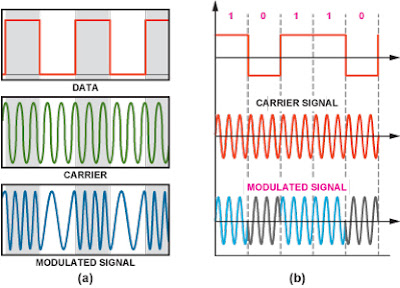AM TRANSMITTER
AM TRANSMITTER
In an AM (amplitude modulation) transmitter the amplitude (strength) of the carrier wave is varied in proportion to the modulation signal. In an FM (frequency modulation) transmitter the frequency of the carrier is varied by the modulation signal.
There are two basic configuration for transmitters.
- High level modulation
- low level modulation
High level modulation
In high power modulation signal,the carrier voltage is modulated at highest power level.the require power level is obtained by class c power amplifier.The block diagram of high level modulation as shown in fig(a).
low level modulation
In the low level modulation system, the carrier is modulated at low power level and the carrier power is subsequently raised to the desire level in the class B amplifier . transmitters using high power level are widely use at present .The block diagram of high level modulation as shown in fig(b).
advantage
- AM signal are reflected back to earth from ionosphere layer. Due to this fact, AM signals can reach far places which are thousands of miles from source. Hence AM radio has coverage wider compare to FM radio.
- It is use in both digital and analog communication.
- AM transmitters are less complex .
- AM receivers are simple, detection is easy .
- AM receivers are cost efficient .
- AM waves can travel a longer distance .
- Low bandwidth
disadvantage
- Power wastage takes place in DSB-FC transmission
- DSB-FC system is bandwidth inefficient system
- AM wave gets affected due to noise
application
- Radio broadcasting
- Picture transmission in a TV system.





Comments
Post a Comment